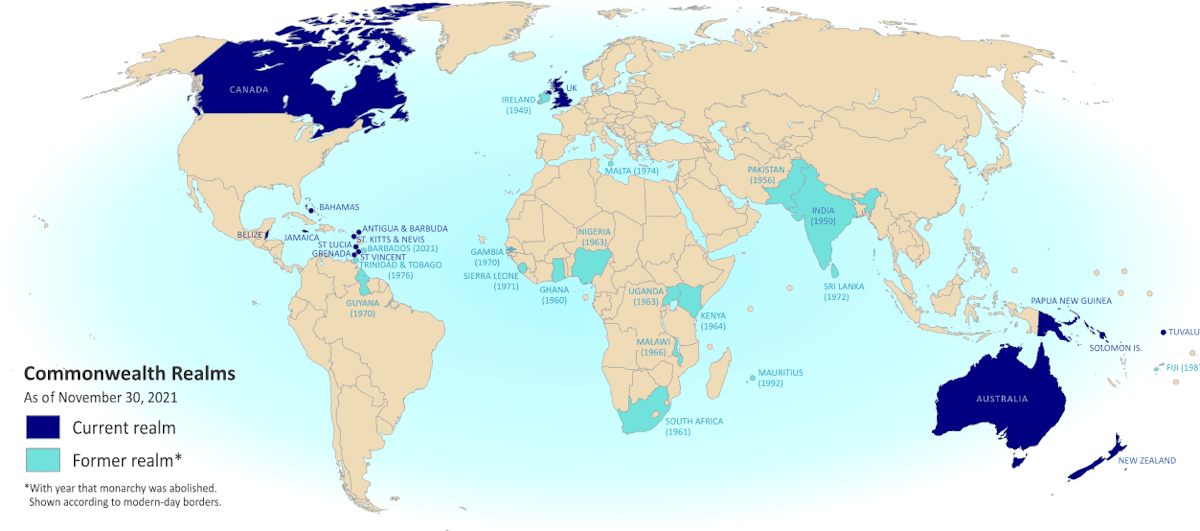About the Commonwealth Realms

The Commonwealth Realms are 15 sovereign states that share a monarch as their head of state. Currently, King Charles III is the monarch of each realm, ruling in a distinct capacity for each nation. These countries are independent of each other and the United Kingdom, but they share a common allegiance to the Crown.
Interesting Facts About the Commonwealth Realms
Diverse Locations
The Commonwealth Realms span six continents, from North America to Oceania.
Unique Governance
Each realm has its own government and laws, with the monarch acting on the advice of local ministers.
Historical Evolution
The concept of Commonwealth Realms emerged from the evolution of the British Empire into the Commonwealth of Nations.
Shared Symbols
Many Commonwealth Realms feature the British monarch on their currency and in their national symbols.
List of Commonwealth Realms
- Antigua and Barbuda
- Australia
- The Bahamas
- Belize
- Canada
- Grenada
- Jamaica
- New Zealand
- Papua New Guinea
- Saint Kitts and Nevis
- Saint Lucia
- Saint Vincent and the Grenadines
- Solomon Islands
- Tuvalu
- United Kingdom
Historical Context
The Commonwealth Realms trace their origins to the British Empire. As former colonies gained independence, some chose to retain the British monarch as their head of state, leading to the creation of the Commonwealth Realms. This arrangement allows these nations to maintain historical ties while operating as fully sovereign states.
Role of the Monarch
In each Commonwealth Realm, the monarch's role is largely ceremonial. The monarch is represented by a Governor-General in each realm (except the UK), who carries out constitutional and ceremonial functions on behalf of the Crown. The monarch appoints the Governor-General on the advice of the realm's government.
Future of the Commonwealth Realms
The future of the Commonwealth Realms is a topic of ongoing discussion. Some realms have considered becoming republics, while others remain committed to the current arrangement. The evolution of these relationships reflects the complex interplay of history, culture, and modern political realities.